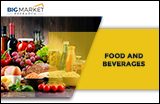
Global Crop Protection Pesticides Market
- MAR2979103
- 186 Pages
- August 2018
- Food and Beverages
Latin America leads the crop protection market with the market share of 26% in 2016 followed by APAC and Europe.
Factors that are driving the global crop protection market are Increasing population, decreasing arable land, focus on productivity, increasing purchasing power
Market Dynamics
.
Enhanced efficiency in utilization of pesticides due to significant advancement in pest management procedures and technology is one of the main reasons. Increasing food demand, shrinking land, greater adoption of genetically modified crops (GM) are some of the factors that affects the growing use of synthetic pesticides.
Other factors including major regions banning the use of pesticides, low per capita use of pesticides in some areas and the growing awareness for food safety and quality.
Market Segmentation
The pesticide market is segmented by
1. Chemical type
2. Application
3. Geography
CHEMICAL TYPE:
The market can be categorized into herbicides, insecticides, fungicides and other crop protection chemicals.
Herbicides segment is the fastest growing with a CAGR of 5.88% followed by fungicides.
APPPLICATION TYPE:
By application type, the market can be divided into crop based and non-crop-based.
Crop -based has the largest market share if we divide market by segmentationItis further divided into grains and cereals, oilseeds, fruits and vegetables. Out of all the categories described, Oilseeds is the fastest growing segment.
Non-crop-based is segmented into:
--> turf
--> ornamental grass
--> others
GEOGRAPHY
The market is segmented into North America, Asia Pacific, South America, Europe and Africa.
The fastest growing region in the forecast period for this market is that of Asia pacific.
South America is the second fastest growing region in the forecasted period. China, India and Brazil are the key growth markets for all types of pesticides. As per FAO, Asia-Pacific remained the largest producer of rice, wheat, and vegetables, from 1996 to 2013, accounting for 90.9%, 43.6% and 85.3% of the global production, respectively.
Key Players
Some of the major players in the market areSyngenta, Bayer, Dow Agrosciences, BASF and Monsanto
 
Report Contents:
> Market segments
> Market Drivers, Restraints and Opportunities
> Market Size & Forecast 2016 to 2022
> Supply & Demand Value Chain
> Market - Current Trends
> Competition & Major Companies
> Technology and R&D Status
> Porters Five Force Analysis
> Strategic and Critical Success Factor Analysis of Key Players
Regional Analysis:
> North America
>> US and Canada
> Latin America
>> Mexico, Brazil, Argentina and Rest of Latin America
> Western Europe
>> EU5 (Germany, France, Italy, Spain, U.K.)
>> Nordic Countries (Denmark, Finland, Norway, and Sweden)
>> Benelux (Belgium, The Netherlands, and Luxembourg)
>> Rest of Western Europe
> Eastern Europe
>> Russia
>> Poland
>> Rest of Eastern Europe
> Asia Pacific
>> China
>> India
>> Japan
>> Australia and New Zealand
>> Rest of Asia Pacific
> Middle East and Africa
>> GCC countries (Saudi Arabia, Oman, Qatar, Bahrain, UAE and Kuwait)
>> South Africa
>> North Africa
>> Rest of Middle East and Africa
This report is an elaborate aggregation of primary inputs from industry experts and participants across the supply chain. It provides details on market segmentation which is derived from several product mapping exercises, macroeconomic parameters and other qualitative and quantitative insights. The impact of all such factors is delivered across multiple market segments and geographies.
Report Highlights:
> Detailed Historical Overview (Market Origins, Product Launch Timeline, etc.)
> Consumer and Pricing Analysis
> Market dynamics of the industry
> Market Segmentation
> Estimated Market Sizing in terms of volume and value
> Recent trends in Market and impact
> Research Status and Technology Overview
> Extensive Industry Structure Coverage
 
Similar Reports
Driven by improving living standards of people and a fast-growing macro-economy, China has remained the largest beer-consuming country worldwide for the 12th consecutive year since 2003, and the largest beer-producing nation globally in the past years. This report focuses on systematic evaluation and analysis of Internal Risks (arising within the industry development itself) and External Risks (ar...
- Publish Date: November 26, 2014
- $800
Summary Based on products type, the report describes major products type share of regional market. Products mentioned as follows: By Type Microparticulated Protein Modified Whey Protein Concentrate Others Based on region, the report describes major regions market by vendor, products and application. Regions mentioned as follows: North America Europe Asia RoW Based on application, the repor...
- Publish Date: March 1, 2017
- $840
Summary The global Oat Protein market is estimated to reach 1.4 K MT in 2017. The objective of report is to define, segment, and project the market on the basis of type, application, and region, and to describe the content about the factors influencing market dynamics, policy, economic, technology and market entry etc. Based on products type, the report describes major products type share of regio...
- Publish Date: April 15, 2017
- $840